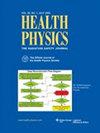社会与核能:辐射防护的作用是什么?
IF 1
4区 医学
Q4 ENVIRONMENTAL SCIENCES
引用次数: 0
摘要
社会对电离辐射危害的预期与实际情况不符。显然,这一假设存在一些基本错误。基于科学原理的重新考虑表明,简单的误解如何夸大了危险。电离辐射对社会的影响是深远的。电离辐射对活体组织的直接影响是破坏性的。然而,这种氧化损伤与正常新陈代谢活动中产生的氧化损伤相似,在正常新陈代谢活动中,随后的生物反应不仅具有保护作用,而且还能刺激加强保护。这种适应性意味着对氧化损伤的反应取决于过去的经验。同样,社会对放射性事故的反应也取决于对以往事件的认知所产生的法规和态度。这些因素决定了核技术和电离辐射是被视为有益的,还是被视为应该避免的。20 世纪下半叶,这种持续恐惧对社会造成的虚假损害的证据表明,这些法律和态度应该重新建立在证据的基础上。放射性影响的三个阶段--最初的物理损害、随后的生物反应以及个人和社会反应--需要完全不同的逻辑和理解。如果混淆了这三个阶段,就会导致制定的法规和公共政策决定往往是无能、危险和昂贵的。一个例子是,物理学的数学严谨性适用于直接影响,却被错误地应用于生物学的适应行为。另一个例子是,核技术饱受折磨的历史声誉被曲解为极端谨慎的辐射防护政策的正当理由。就核技术而言,由此导致的缺乏独立的政治信心危及到采用核能替代化石燃料。从长远来看,核能是唯一可行的大规模一次能源来源,但这需要公众重新认识核能。本文章由计算机程序翻译,如有差异,请以英文原文为准。
Society and Nuclear Energy: What Is the Role for Radiological Protection?
The harm that society expects from ionizing radiation does not match experience. Evidently there is some basic error in this assumption. A reconsideration based on scientific principles shows how simple misunderstandings have exaggerated dangers. The consequences for society are far-reaching. The immediate impact of ionizing radiation on living tissue is destructive. However, this oxidative damage is similar to that produced during normal metabolic activity where the subsequent biological reaction is not only protective but also stimulates enhanced protection. This adaptation means that the response to oxidative damage depends on past experience. Similarly, social reaction to a radiological accident depends on the regulations and attitudes generated by the perception of previous instances. These shape whether nuclear technology and ionizing radiation are viewed as beneficial or as matters to avoid. Evidence of the spurious damage to society caused by such persistent fear in the second half of the 20th century suggests that these laws and attitudes should be rebased on evidence. The three stages of radiological impact-the initial physical damage, the subsequent biological response, and the personal and social reaction-call on quite different logic and understanding. When these are confused, they lead to regulations and public policy decisions that are often inept, dangerous, and expensive. One example is when the mathematical rigor of physics, appropriate to the immediate impact, is misapplied to the adaptive behavior of biology. Another, the tortured historical reputation of nuclear technology, is misinterpreted as justifying a radiological protection policy of extreme caution.Specialized education and closed groups of experts tend to lock in interdisciplinary misperceptions. In the case of nuclear technology, the resulting lack of independent political confidence endangers the adoption of nuclear power as the replacement for fossil fuels. In the long term, nuclear energy is the only viable source of large-scale primary energy, but this requires a re-working of public understanding.
求助全文
通过发布文献求助,成功后即可免费获取论文全文。
去求助
来源期刊

Health physics
医学-公共卫生、环境卫生与职业卫生
CiteScore
4.20
自引率
0.00%
发文量
324
审稿时长
3-8 weeks
期刊介绍:
Health Physics, first published in 1958, provides the latest research to a wide variety of radiation safety professionals including health physicists, nuclear chemists, medical physicists, and radiation safety officers with interests in nuclear and radiation science. The Journal allows professionals in these and other disciplines in science and engineering to stay on the cutting edge of scientific and technological advances in the field of radiation safety. The Journal publishes original papers, technical notes, articles on advances in practical applications, editorials, and correspondence. Journal articles report on the latest findings in theoretical, practical, and applied disciplines of epidemiology and radiation effects, radiation biology and radiation science, radiation ecology, and related fields.
 求助内容:
求助内容: 应助结果提醒方式:
应助结果提醒方式:


